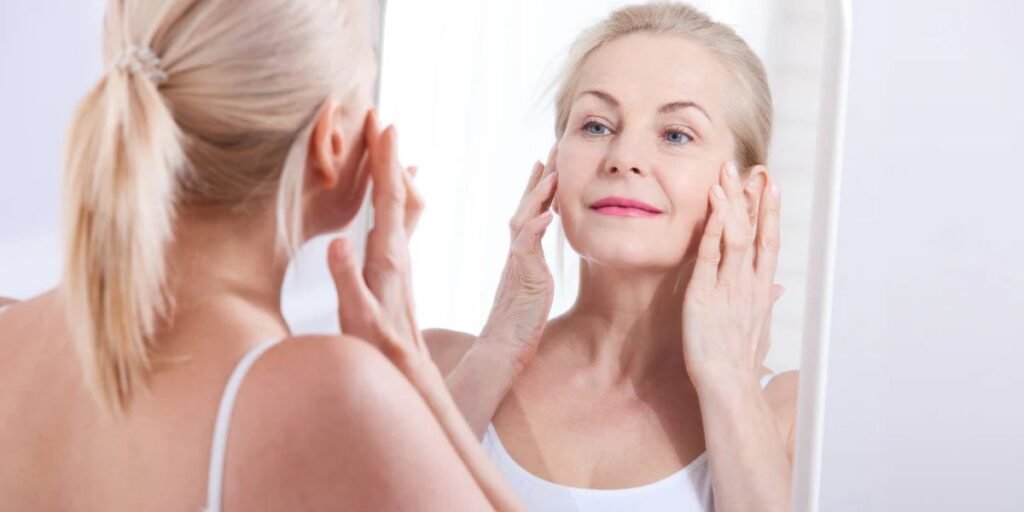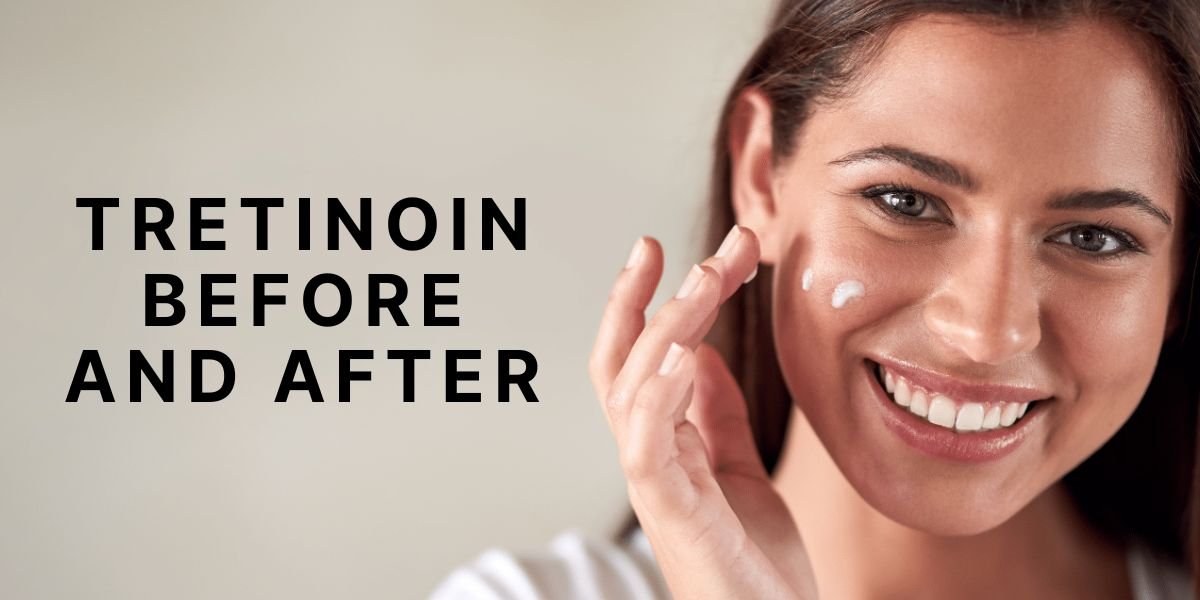In the ever-growing world of skincare, one name that constantly stands out is tretinoin. Whether you’re scrolling through Reddit skincare threads, watching YouTube skincare routines, or reading dermatology blogs, you’ll inevitably come across someone sharing their tretinoin before and after story. But what exactly does tretinoin do? How long does it take to work? And what kind of transformation can you realistically expect from using it?
This article will walk you through the complete tretinoin journey from the initial purge to the glowing, clear skin that many users claim. We’ll explore the science behind tretinoin, explain the changes you’ll see on your skin at each stage, and present a clear timeline of what “before and after” really looks like. We’ll also include a table for easy comparison and summarize everything in a way that’s simple to understand yet medically accurate.
What is Tretinoin?
Tretinoin, also known by its brand names like Retin-A, Renova, or Atralin, is a topical derivative of vitamin A and a type of retinoid. It’s FDA-approved and has been used in dermatology for decades. Originally developed to treat acne, it was soon found to have incredible anti-aging benefits. Tretinoin works by increasing cell turnover, unclogging pores, and promoting collagen production.
But it’s not magic it takes time, consistency, and often, patience.
The “Before” Phase: What Your Skin Might Look Like Pre-Tretinoin
Before starting tretinoin, most users have one or more of the following skin concerns:
- Moderate to severe acne
- Clogged pores, blackheads, and whiteheads
- Hyperpigmentation or dark spots (from acne, sun damage, or melasma)
- Uneven skin tone and texture
- Early signs of wrinkles or fine lines
Some people may already have a skincare routine, while others might be starting from scratch. Either way, tretinoin is often introduced when over-the-counter products like salicylic acid, benzoyl peroxide, or niacinamide aren’t delivering long-term results.
What Happens When You Start Using Tretinoin?

This is where things get real and a bit rough. The initial stages of using tretinoin can be uncomfortable, and many users go through what’s known as the tretinoin purge.
Your skin may react with:
- Redness
- Dryness
- Peeling or flaking
- Increased acne breakouts
This purge usually lasts between 2 to 6 weeks, depending on your skin type, concentration of tretinoin, and frequency of use. It’s not fun, but it’s a sign that your skin is adjusting and purging clogged pores.
During this time, it’s crucial to use moisturizer, sunscreen, and gentle cleansers. Avoid exfoliants and other strong actives.
The Transformation: Tretinoin Before and After Timeline
Let’s break down the tretinoin journey and what kind of “before and after” results to expect at different stages.
| Time Frame | |
| Week 1–4 | The purge phase begins: skin might get worse before it gets better (more breakouts, peeling, redness). |
| Week 5–8 | Acne starts reducing, flaking subsides; skin may still be sensitive. |
| Week 9–12 | Skin starts looking smoother, fewer breakouts, dark spots begin to fade. |
| Month 4–6 | Significant improvement in skin texture and tone; acne greatly reduced. |
| Month 6–12 | Fine lines visibly softened, hyperpigmentation faded, skin looks more youthful. |
| After 1 year | Skin is transformed: clear, smooth, glowing, even-toned. Maintenance becomes easy. |
Realistic Before and After Expectations
Tretinoin is not an overnight miracle. Unlike quick-fix serums, its effects are gradual and cumulative. That’s why before and after photos you find online are often taken months apart and they’re real. You might see some people experience clear, glowing skin within 3 months, while others take a year.
Common improvements seen in the “after” stage include:
- Dramatically reduced acne
- Even skin tone and smooth texture
- Faded acne scars and dark spots
- Reduction in fine lines and early wrinkles
- Brighter, healthier-looking skin
But remember: consistency is key. Missing applications, over-exfoliating, or using it incorrectly can delay progress or worsen side effects.
Key Tips to Maximize Your Results
While tretinoin does most of the heavy lifting, your skincare habits around it are just as important. Here are a few proven strategies that dermatologists recommend:
- Start Slow: Use tretinoin 2–3 times per week in the beginning and gradually increase frequency.
- Apply on Dry Skin: Always wait 15–30 minutes after washing your face to apply tretinoin — it reduces irritation.
- Use a Pea-Sized Amount: More isn’t better. A tiny amount goes a long way.
- Moisturize Generously: Prevent peeling and irritation with a thick, fragrance-free moisturizer.
- Never Skip Sunscreen: Tretinoin makes your skin sensitive to the sun, increasing the risk of burns and dark spots.
- Be Patient: Some of the most dramatic “after” photos are from users who stuck with it for 6 months or longer.
Who Should Use Tretinoin?
Tretinoin is suitable for a variety of skin types and concerns, including:
- Teenagers with moderate to severe acne
- Adults struggling with adult acne or post-acne marks
- People in their 20s/30s aiming for preventative anti-aging benefits
- Individuals with hyperpigmentation or melasma
- Anyone looking to improve texture and reduce pore size
However, it’s not ideal for people with extremely sensitive skin, rosacea, or those who cannot tolerate retinoids. Pregnant and breastfeeding individuals should avoid tretinoin unless advised otherwise by a doctor.
Comparing Tretinoin with Other Retinoids
Many people confuse tretinoin with over-the-counter retinol or other prescription retinoids like adapalene. Here’s a quick comparison to clarify how tretinoin stands out:
| Retinoid Type | Strength | Speed of Results | Prescription Needed? | Best For |
| Tretinoin | High | Fast (3–6 months) | Yes | Acne, aging, hyperpigmentation |
| Retinol (OTC) | Low to Medium | Slow (6–12 months) | No | Mild texture or early signs of aging |
| Adapalene (Differin) | Medium | Moderate (3–6 months) | No (in OTC form) | Acne and clogged pores |
| Tazarotene | Very High | Fast (2–4 months) | Yes | Tough acne, oily skin, psoriasis (sometimes) |
Side Effects and How to Deal With Them
Tretinoin’s effectiveness comes with a price especially in the early stages. Common side effects include:
- Peeling and dryness
- Flushed or red skin
- Increased acne breakouts (purging)
- Burning or stinging sensation after application
To manage these side effects:
- Use the sandwich method (moisturizer → tretinoin → moisturizer)
- Avoid harsh cleansers or scrubs
- Apply on alternate nights during the first month
- Always use sunscreen to prevent redness and damage
If side effects are severe, consult a dermatologist. Sometimes, a lower strength (like 0.025%) works better for sensitive skin.
Final Thoughts
The answer is a resounding yes—if you’re committed and patient.
Tretinoin is one of the few skincare ingredients backed by decades of research and trusted by dermatologists globally. The “before and after” results are not hype—they’re real. From banishing stubborn acne to visibly smoothing skin and softening fine lines, tretinoin transforms skin slowly but surely.
But this journey requires a mindset shift. Results don’t come overnight, and there’s no magic bottle. The process includes discomfort, temporary setbacks, and adjustments. But those who stay the course often say it’s one of the best skincare decisions they’ve ever made.
If you’re looking at your own reflection wondering when your skin will finally feel smooth, even-toned, and radiant, then starting your tretinoin journey might just be the first step toward your own powerful “after” moment.
Read More Blogs 🙂
